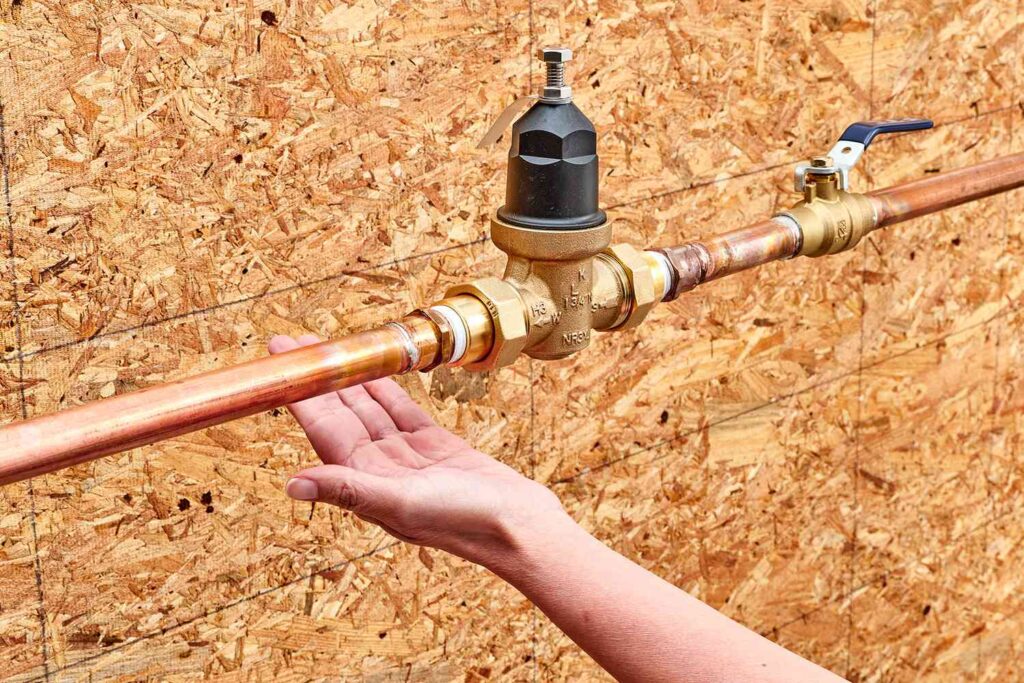The Importance of Installing a Pressure Regulator in Plumbing
Plumbing systems are designed to deliver water efficiently and safely throughout your home or commercial building. However, one often overlooked component that plays a vital role in maintaining this balance is the pressure regulator. This small yet essential device controls water pressure, helping to protect pipes, fixtures, and appliances from damage caused by excessive force. Installing a pressure regulator can prevent costly repairs, improve water efficiency, and extend the life of your entire plumbing system.
Understanding Water Pressure in Plumbing Systems
Water pressure refers to the force with which water moves through the pipes. Municipal water suppliers often send water to homes at high pressures to ensure it can reach tall buildings and distant neighborhoods. While this high pressure benefits distribution, it can be too much for a residential plumbing system to handle safely. Most plumbing systems are designed to operate efficiently at a water pressure of around 50 to 60 psi (pounds per square inch). When pressure exceeds this range, it can strain your pipes and fixtures, potentially causing leaks or bursts.
Excessive water pressure is more than just a plumbing concern; it can also lead to increased utility bills, noisy pipes, and a shorter lifespan for water-using appliances like dishwashers, washing machines, and water heaters. A pressure regulator ensures that the pressure entering your home remains within a safe and manageable range.

What Is a Pressure Regulator and How Does It Work?
A pressure regulator is a plumbing device installed on the main water line, typically where the supply line enters a property. It functions by reducing the pressure of incoming water to a level that is safe and usable for residential or commercial systems. The device contains a spring-loaded diaphragm that adjusts based on the incoming pressure, maintaining a consistent output regardless of fluctuations in the municipal supply.
The key to a pressure regulator’s effectiveness is its ability to respond dynamically. When the incoming pressure is too high, the regulator automatically reduces the force. If pressure drops, it opens slightly to allow more flow, ensuring a stable pressure level is maintained throughout the building. This balance helps avoid the wear and tear that fluctuating or excessive pressure can cause over time.
Protecting Plumbing Fixtures and Appliances
One of the most significant advantages of installing a pressure regulator is the protection it provides to your plumbing fixtures and appliances. Faucets, showerheads, toilets, and other components are designed to handle specific pressure levels. Continuous exposure to high water pressure can lead to dripping faucets, running toilets, and even cracked components, resulting in expensive repairs and water waste.
Similarly, household appliances connected to the water supply are highly sensitive to pressure changes. High water pressure can shorten the lifespan of dishwashers, washing machines, and water heaters by damaging internal valves and seals. Over time, this pressure stress may result in frequent breakdowns, requiring replacement or major repairs. A pressure regulator acts as a safeguard, helping these appliances function efficiently and last longer.
Preventing Pipe Damage and Water Leaks
Pipe damage is another major concern associated with high water pressure. When water flows with excessive force, it can cause pipes to vibrate, shift, and even burst in extreme cases. This is particularly true for older homes with aging pipes or joints that may not withstand the stress. Minor pinhole leaks may go unnoticed initially but can lead to significant water damage and mold growth over time.
By installing a pressure regulator, you reduce the risk of these problems. Regulated pressure prevents the buildup of stress within the pipes, maintaining their structural integrity and minimizing the chances of leaks or bursts. This proactive step can save homeowners thousands of dollars in potential water damage repairs and reduce the likelihood of emergency plumbing calls.
Improving Water Efficiency and Conservation
High water pressure not only damages plumbing systems but also leads to unnecessary water consumption. Faucets and showers may release more water than needed, causing excessive use without added benefit. This results in higher water bills and unnecessary strain on municipal water resources.
With a pressure regulator in place, you can achieve better control over water flow. Reduced pressure does not mean weaker showers or less effective water use; instead, it ensures that water is used more efficiently. In many cases, users won’t even notice the difference in flow, but the impact on water conservation and cost savings can be substantial. In areas facing water scarcity, installing a pressure regulator also contributes to broader sustainability efforts.
Enhancing the Comfort of Your Home
Inconsistent or high water pressure can affect daily routines and comfort in your home. You may notice sudden changes in water temperature during showers, noisy pipes, or splashing water from sinks. These issues can be disruptive and annoying, reducing the overall comfort and usability of your plumbing system.
A pressure regulator ensures a smoother, quieter, and more consistent experience. It eliminates annoying fluctuations and allows for even water flow across all fixtures. This can improve your home environment, making tasks like washing dishes or taking showers more pleasant and predictable.

Meeting Plumbing Codes and Insurance Requirements
In many jurisdictions, building codes require the installation of a pressure regulator when water pressure exceeds a certain threshold. Failing to comply with these codes could not only put your property at risk but also create issues with insurance claims. If water damage occurs due to unregulated pressure, some insurance providers may refuse to cover the damages if the home was not up to code.
Installing a pressure regulator helps ensure your plumbing system complies with local regulations. It may also help lower insurance premiums by reducing the risk of water-related damage. For homeowners looking to renovate or sell their property, having a pressure regulator already installed can be a valuable selling point and a sign of responsible maintenance.